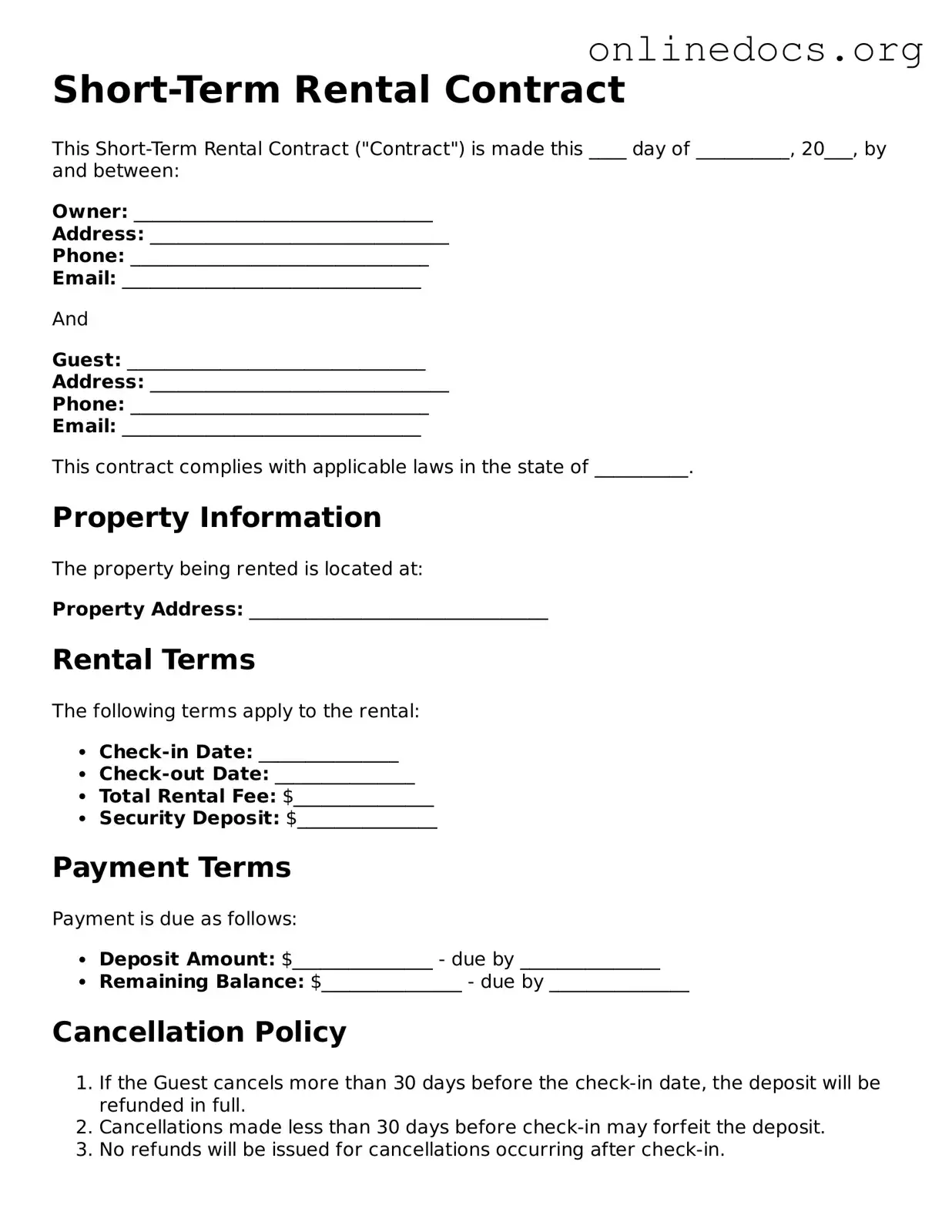The Lease Agreement is a foundational document in real estate transactions. It outlines the terms under which a tenant can occupy a property. Like the Short-Term Rental Contract, it specifies the rental period, payment details, and responsibilities of both parties. Both documents aim to protect the interests of landlords and tenants, ensuring clarity in the rental arrangement.
The Vacation Rental Agreement serves a similar purpose to the Short-Term Rental Contract, particularly for properties rented for leisure purposes. This document includes details about the rental duration, payment terms, and house rules. Both agreements emphasize the importance of maintaining the property and outline the consequences for damages or violations, ensuring a smooth rental experience for both parties.
The Room Rental Agreement is often used when a single room is rented within a larger property. Like the Short-Term Rental Contract, it specifies rental terms, payment obligations, and shared responsibilities. Both documents help clarify expectations between the landlord and tenant, particularly in shared living situations.
The Commercial Lease Agreement is designed for businesses renting commercial space. While it often involves longer terms than a Short-Term Rental Contract, both documents outline rental rates, duration, and the responsibilities of the parties involved. They also address issues like maintenance and property use, ensuring a clear understanding of the rental relationship.
The process of securing a rental agreement can often seem intricate, especially when considering the various types of forms involved. From Short-Term Rental Agreements to License Agreements, each document plays a vital role in defining the rental relationship. To ensure that all terms are understood, landlords and tenants may benefit from reviewing resources like the Lease Agreement form, which you can find here: https://nypdfforms.com/lease-agreement-form. This form outlines essential components that clarify both parties' responsibilities and expectations, making it an invaluable tool in the rental process.
The Property Management Agreement is relevant for landlords who hire property managers. This document outlines the responsibilities of the property manager and the fees involved. Similar to the Short-Term Rental Contract, it establishes expectations and duties, ensuring that both the property owner and manager are aligned on their roles.
The Tenant Agreement is a broader term that encompasses various rental situations. It details the rights and obligations of tenants, much like the Short-Term Rental Contract. Both documents aim to protect the interests of tenants while ensuring they understand their responsibilities during the rental period.
The Rental Application is often used in conjunction with rental agreements. It collects essential information about potential tenants, helping landlords make informed decisions. While not a contract itself, it shares similarities with the Short-Term Rental Contract in that both documents establish the foundation for a rental relationship, setting the stage for future agreements.
